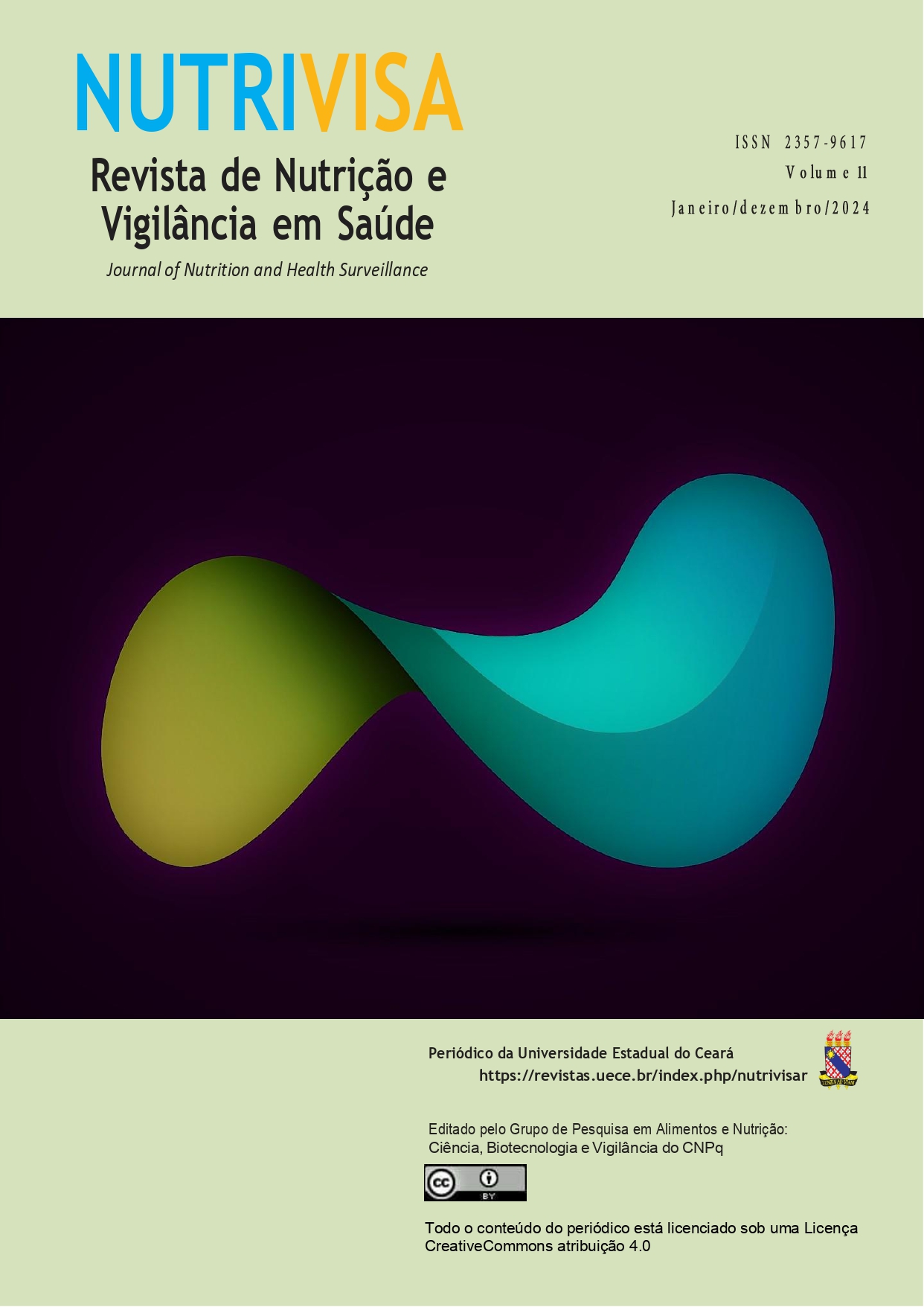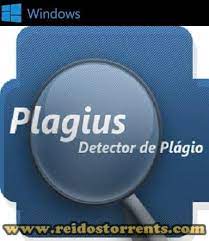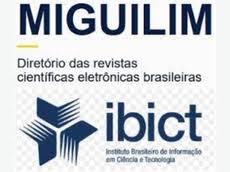Estudo da detecção de Salmonella spp. em alimentos comercializados na cidade de Fortaleza-CE através de método molecular (qPCR) e método convencional
DOI:
https://doi.org/10.59171/nutrivisa-2024v11e12262Palabras clave:
Salmonella spp., qPCR, métodos moleculares para alimentosResumen
A Salmonelose é uma das doenças mais comuns no mundo, transmitida por alimentos contaminados com diversos sorotipos de Salmonella spp., que ameaçam a segurança alimentar e a saúde pública. Em muitos países as soravares Enteritides e Thyphtmurium são as mais comuns, encontradas principalmente em ovos, frangos e carne bovina. Os alimentos podem ser contaminados com esse microrganismo ao longo de toda cadeia produtiva, durante as etapas de manuseio, processamento, armazenamento, distribuição e comercialização. Atualmente, existem diversas metodologias para detecção de Salmonella spp., incluindo o isolamento convencional, testes rápidos e as metodologias moleculares rápidas. O método de Reação em Cadeia da Polimerase quantitativo (qPCR) ou PCR em tempo real trata-se de uma ferramenta promissora em estudos que visam quantificar populações de microrganismos associadas a alimentos e apresenta a vantagem de detectar microrganismos mesmo em pequenas concentrações na amostra. Nesta pesquisa, 182 amostras de alimentos de origem animal e vegetal, comercializadas na cidade de Fortaleza- Ce, foram submetidas a análise de detecção de Salmonella spp. visando avaliar duas metodologias diferentes empregadas na detecção desse microrganismos (técnica de isolamento convencional- ISO 6579 e o PCR em tempo real - Plataforma Gene UP). Das amostras analisadas, foram detectadas Salmonella spp. em 38 amostras utilizando o PCR em tempo real (Gene up) e em 22 amostras utilizando a técnica de isolamento convencional - ISO 6579, representando percentuais de detecção de 20% e 12%, respectivamente. A diferença de 8% de positividade entre os métodos se justifica pela técnica de qPCR ser um método que detecta em nível molecular o DNA microbiano, apresentando alta sensibilidade, especificidade, precisão e rapidez. Enquanto o teste tradicional de isolamento convencional detecta o microrganismo em níveis cultiváveis, ou seja, aquele que está apto ao desenvolvimento no alimento. Foi constatado que o método molecular utilizado é uma ferramenta promissora para o diagnóstico de patógenos em alimentos e pode otimizar o tempo de respostas dos ensaios nos laboratórios.
Citas
ABNT – Associação Brasileira de Normas Técnicas. ABNT NBR ISO 6579. Microbiologia de Alimentos e alimentação de animais: método horizontal para a detecção de Salmonella spp. Rio de Janeiro: ABNT, 2017.
BARE, J.; PARDINI, M. I. M. C.; GUSHIKEN, T. Extração de DNA de materiais de arquivo e fontes escassas para utilização em reação de polimerização em cadeia (PCR). Rev. bras. hematol. hemoter, São Paulo, v. 4, n. 26, p.274-281, ou/dez. 2004.
BRASIL. Agência Nacional De Vigilância Sanitária - ANVISA. Resolução - RDC Nº 724, de 1º de julho de 2022. Disponível em:< www.anvisa.gov.br/legis>. Acessado em: 13 de dezembro 2023.
DIAS, J. Referências para controle de Salmonela em alimentos de baixa atividade de água. Campinas: Food Safety Brazil, 2023. Disponível em: https://foodsafetybrazil.org/referencias-para-controle-de-salmonela-em-alimentos-de-baixa-atividade-de-agua/. Acesso em 08 de dez 2023.
FURQUIM, I.R.V.; CAMPOS, B.F.; SITTA, M.J.Z.; PLAZA, M.A.S.; SPAZIANI, A.O. Óbitos por Salmonella no período compreendido entre 2013 e 1017 de acordo com dados disponíveis no Datasus. Braz J Dev, v. 7, p.48323-48332, 2021. DOI: 10.34117/bjdv7n5-302 . Acesso em 20 out. 2023.
GBD 2016 Diarrhoel Disease Collaborators. Estimates of the global, regional, and national morbidity, mortality, and etiologies of diarrhoea in 195 countries: a systematic analysis for the Global Burden of Disease Study 2016. Lancet Infect Dis, New York, v.18, n11, p. 1211-1228, nov. 2018. DOI: 101016/S1473-3099(18)30362-1. Acesso em: 20 nov. 2023.
GIRAFFA, G.; CARMINATI, D. Molecular techniques in food fermentation: principles and applications. In: COCOLIN, L.; ERCOLINI, D. Molecular techniques in the microbial ecology of fermented foods. Food microbiology and food safety series. New York: Editora Springer, 2008. cap.1, p.1- 30.
GONÇALVES, A. Diagnóstico molecular para detecção de patógenos alimentares em embutidos. 2012. Trabalho de conclusão de curso (Graduação em Tecnologia de Alimentos) - Universidade Tecnológica Federal do Paraná, Ponta Grossa.
JOHNSON, R.L.; MILLS, J.C; TAYLOR, N. J.; BIRD, P.M. Evaluation of the GENE-UP Salmonella Method for the Detection of Salmonella Species in a Broad Range of Foods and Select Environmental Surfaces: Collaborative Study, First Action 2020.02. J AOAC INT, v. 104, p.1084-1097, 2021. DOI: 10.1093/jaoacint/qsab005. Acesso em 10 set 2023.
JUSTÉ, A.; THOMMA, B.P.H.J.; LIEVENS, B. Recent advances in molecular techniques to study microbial communities in food-associated matrices and processes. Food Microbiology, v.25, p.745-761, 2008. DOI: https://doi.org/10.1016/j.fm.2008.04.009. Acesso em 23 out 2023.
LIU, L.; ZHAO, G.; LI, X.; XU, Z.; LEI, H.; SHEN, X. Development of rapid and easy detection of Salmonella in food matrics using RPA-CRISPR/Cas12a method. LWT – Food Sci and Technol, v.162, p. 1-8, 2022. DOI: https://doi.org/10.1016/j.lwt.2022.113443. Acesso em 25 out. 2023.
MARQUES, P.R.C.; TRINDADE, R.V.R. Panorama epidemiólogico dos surtos de doencas transmitidas por alimentos entre 2000 e 2021 no Brasil. Revista Multidisciplinar em Saúde, v.3, n.3, p.1-10, 20 ago. 2022. DOI: https//doi.org/10.51161/rems/3477.
ONU News - Organização das Nações Unidas. New York: ONU, 2022. Disponível em: https://news.un.org/pt/story/2022/04/1787412. Acesso em 09 de nov 2023.
VAUGHAN, E.E.; HEILIG, H.G.H.J.; BEM-AMOR, K.; VOS, W.M. Diversity, vitality and activities of intestinal lactic acid bacteria and bifidobacteria assessed by molecular approaches. FEMS Microbiol Rev, v.29, p.477–490, 2005. DOI: 10.1016/j.femsre.2005.04.009. Acesso em 21 out 2023.
VILLARREAL, MARTHA LISSETE MORALES; PADILHA, MARINA; VIEIRA, ANTONIO DIOGO SILVA; FRANCO, BERNADETTE DORA GOMBOSSY DE MELO; MARTINEZ, RAFAEL CHACON RUIZ; SAAD, SUSANA MARTA ISAY. Advantageous Direct Quantification of Viable Closely Related Probiotics inPetit-Suisse Cheeses under In Vitro Gastrointestinal Conditions by Propidium Monoazide - qPCR. PLoS One, San Fracisco, v. 8, p. e82102-11, 2013. DOI: https://doi.org/10.1371/journal.pone.0082102. Acesso em 23 out 2023.
Descargas
Publicado
Cómo citar
Número
Sección
Licencia
Derechos de autor 2024 Francisca Raquel Vieira de Araújo, Cícera Nayara Alexandre de Oliveira, Sônia Coelho Abreu de Oliveira, Ticiane Coelho Abreu de Oliveira, Cyntia Ladyane Alves de Moura, Mayra Garcia Maia Costa

Esta obra está bajo una licencia internacional Creative Commons Atribución 4.0.













